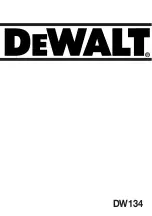
www.action-electronics.co.uk
MARINE MOTOR MIXER
For 2-3 motors
R/C ELECTRONICS
P40E
Neutral
(centre stick)
setting up
Autoset (takes 2 seconds)
Receiver voltage
4.8
- 6
V
V*
Case size
55 mm x 36mm x 20mm
Power ON indicator
LED
Adjustments
Four different degrees of motor mix via 2-way PCB switch
This on-board marine motor mixer will suit models with two or three electronic speed-controlled
motors. It now has four user-selectable ‘degrees’ of mix which make it suitable for models from fast
launches to very manoeuvrable work-boats such as tugs. This offers full proportional control of
motors and steering from only two radio channels, although it will work with sets of four or more
channels. It has proved to be compatible with most electronic speed controllers which are equipped
with full forward and reverse power function,
Use of BEC is not
including those for brushless motors.
recommended but can be accommodated. We strongly recommend the use of a separate battery pack
for each motor to avoid the complications due to earth loops which can arise with resetting
microprocessors.
Straight-through output pin connections are provided for a rudder servo and a third, unmixed speed
controller for a central motor. This eliminates the need for Y-leads.
OPERATION
Always switch on your Transmitter first, then your receiver. (Allow the two to ‘bind’ if you are using a 2.4GHz
set). Wait for a further three or four seconds before moving either of the transmitter sticks; this allows the on-
board microprocessor to set itself to the incoming neutral signals from the transmitter. When closing down,
switch off the receiver first, followed by the transmitter.
DO NOT PLUG OR UNPLUG ANY CONNECTIONS TO THE RECEIVER OR MIXER WITH THE POWER SWITCHED ON.
IT CAN FATALLY DAMAGE MICROPROCESSORS.
MODES OF OPERATION
P40E has four different degrees of mixing, depending on the type of model into which you have fitted it. These
are set by moving the little switches 1 and 2 as follows:
Mode 1: SW1=ON; SW2=ON - This is designed for fast models such as patrol boats and modern lifeboats. The
inner motor in a turn is reduced in speed by applying increasing amounts of rudder command but it will not go
into reverse, irrespective of how fast the model is travelling. This avoids the model slowing down noticeably
when a turn is applied.
Mode 2: SW1=OFF; SW2=ON - This allows the inner motor to go into reverse at full rudder but restricts that
reverse speed to 25%. It suits slightly slower models than Mode 4 or where a little more manoeuvrability is
required.
Mode 3: SW1=ON; SW2=OFF - As Mode 2 except that the inner motor can reverse up to 50% full speed at full
rudder.
Mode 4: SW1=OFF; SW2=OFF - This is the classic “spin-on-the-spot
”
mode where the inner motor can be made
to run at full reverse speed with full rudder and a little throttle. It is designed for very manoeuvrable models
such as tugs.
Note that NONE of the modes allows the inner motor to reverse at full throttle
full rudder which would cause
and
a drastic
“
lurch
”
in the model
’
s progress at speed. Selection of the correct mode is down to the user by seeing
what the model does when different throttle and rudder commands are given. If in doubt we suggest starting
with Mode 1, which is the most
“
gentle
”
mix.
CONNECTION and TESTING
Connect the plugs on the two fitted leads marked
and
to the
teering and
hrottle outputs of your receiver.
S
T
S
T
Connect the port and starboard speed controllers to Motor 1 and Motor 2 output pins, ensuring that the leads are
fitted the right way around (See drawing). The third (central) motor speed controller can be connected if you are
using a central motor. This will follow the throttle control
and will not be affected by any mixing. The last
only
connection is the steering servo. IF YOU ARE USING ACTION SPEED CONTROLLERS THEN YOU SHOULD FIT A
SEPARATE BATTERY FOR EACH MOTOR to avoid the possibility of ground loops which could cause loss of motor
control.
*
5-CELL RECHARGEABLE PACK OR A 6V LEAD-ACID
PREVIOUS VERSIONS OF THE P40 COULD NOT BE USED WITH A
BATTERY
HOWEVER THE P40E CAN BE USED FROM ANY 4.8V / 6.0V / 6.6V BATTERY






















